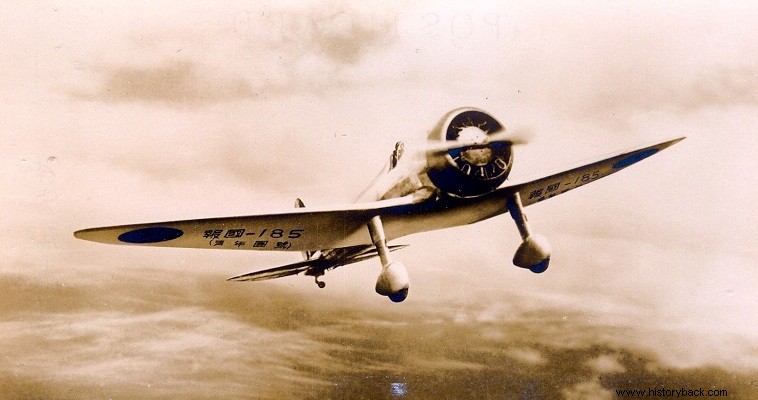
Hiromishi Shinohara was born in 1913 to farmer parents on the island of Honshu, Japan. After finishing his high school studies he was called to do his military service. He joined the 27th Cavalry Regiment and in 1931 found himself in Japanese-controlled Manchuria. Then you met the air gun and decided to join the Japanese military air force.
He attended Tokorozawa Aviation School and in 1934 received his pilot's license. He was assigned to the 11th Airborne Regiment in Harbin, Manchuria, and was promoted to the rank of sergeant. On May 10, 1939, however, clashes broke out in the area with the Soviets which escalated into what is known as the Nomohan Episode in Japan or the Battle of Halkin Gol.
On 24 May 20 Nakajima Ki-27 (Nate) fighters of the 11th Air Regiment were pushed to the border and three days later on 27 May Shinohara was in the air facing Soviet fighters.
In this first battle he showed that he was a born ace by shooting down four Soviet I-16s... The next day he raised his record by shooting down a Soviet L-Z reconnaissance and five I-15 fighters, making him a "double" ace in just two days!
Shinohara continued to fight, increasing his number of takedowns. On June 27, 1939, however, he achieved the impossible. That day over 100 Japanese aircraft of all types took off targeting Soviet positions and airfields across the Halka River.
The Soviets took off every available aircraft to counter the Japanese. In the fierce dogfights that followed, Shinohara shot down 11 Soviet aircraft!
His tactics consisted of a dashing "raid" against enemy formations in order to frighten his opponents and disperse them. Then hit the enemy aircraft one by one, being an excellent marksman. For his action he was promoted to second lieutenant.
It is worth noting that the Ki-27 fighters were armed with only two 7.7mm machine guns, i.e. the same as that of their World War I counterparts. Where the first monoplane of the Japanese military aviation excelled was flexibility and, in relation to the I-15, speed.
Light armament and generally light construction and lack of armor were serious disadvantages. Nevertheless, it was a deadly tool in the hands of Japanese pilots. Shinohara continued to fight with the same fanaticism. On July 25, however, it was his turn to be shot down. He managed to make a skid landing in the middle of a battle between Japanese and Soviet troops.
Shinohara was in immediate danger as Soviet tanks approached him. But he was saved by Sergeant Iwasaki who landed his aircraft on dry land and took him in his aircraft, removing him from danger. However, fate had now decided for Shinohara. Tired of the constant sorties, on 27 August, he was involved in dogfights with Soviet fighters while escorting Japanese bombers.
Shinohara fought with his familiar temper. He even managed to shoot down three Soviet aircraft before being fatally hit by Soviet Polykarpov I-16s. His aircraft crashed in flames into a nearby lake.
The posthumous second lieutenant, Shinohara had achieved in just three months of action 58 downs, becoming the leading ace of the Japanese military air force. His record did not fall even in World War II.

